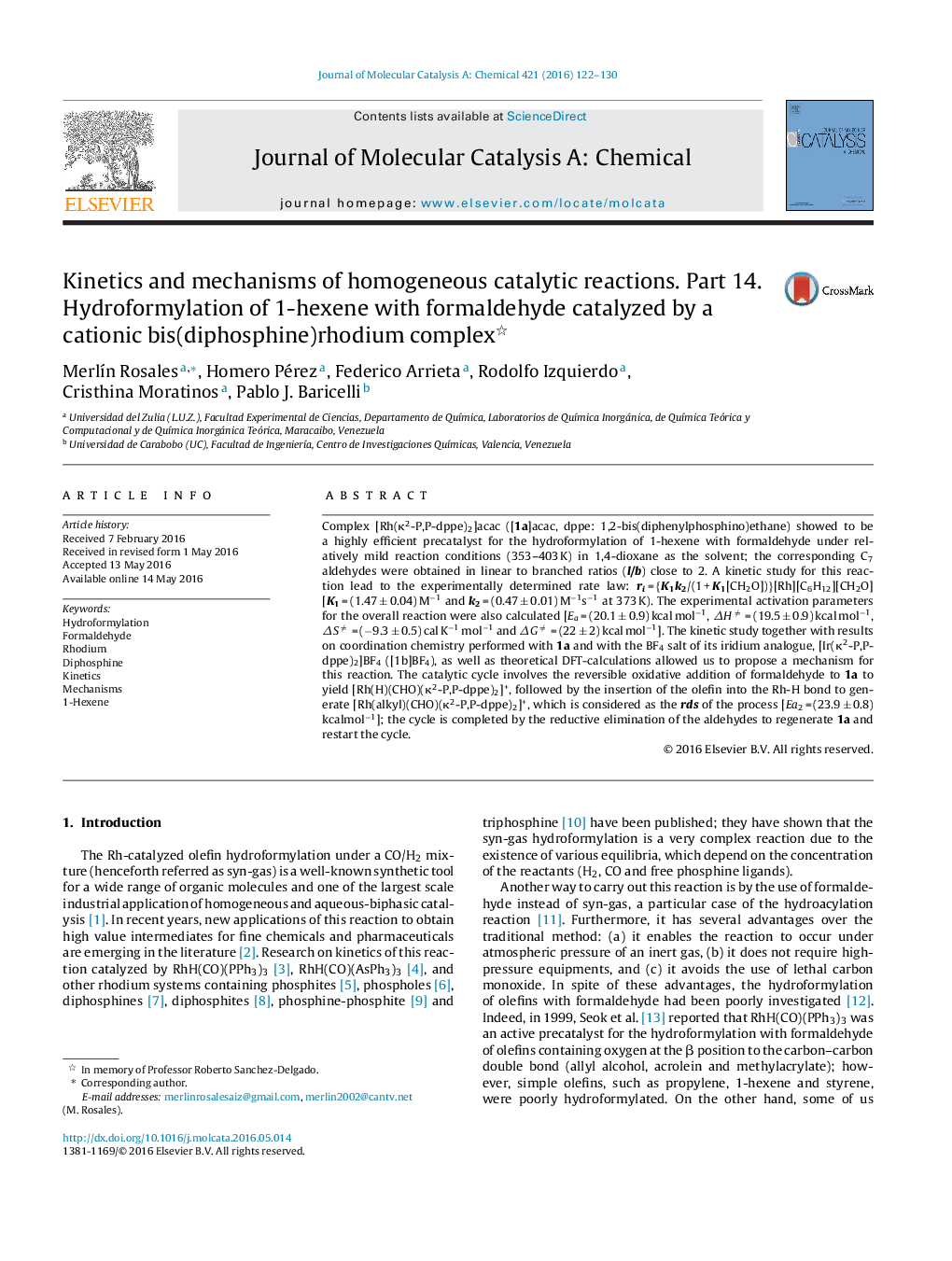| کد مقاله | کد نشریه | سال انتشار | مقاله انگلیسی | نسخه تمام متن |
|---|---|---|---|---|
| 64621 | 48363 | 2016 | 9 صفحه PDF | دانلود رایگان |

• The reaction of olefins with formaldehyde catalyzed by [Rh(κ2-P,P-dppe)2]+ is another way to carry out the olefin hydroformylation.
• The hydroformylation of olefins with formaldehyde has several advantages over the traditional method: (a) it enables the reaction to occur under atmospheric pressure of an inert gas, (b) it does not require high-pressure equipments, and (c) it avoids the use of lethal carbon monoxide.
• The kinetic and mechanism of the reaction with formaldehyde catalyzed by a cationic bis(dppe)rhodium complex is simpler than the hydroformylation reactions carried out under syn-gas conditions.
• Experimental and theoretical DFT calculations corroborate that hydroformylation of 1-hexene with formaldehyde catalyzed by a cationic bis(dppe)rhodium complex do proceed via hydroacylation mechanism rather than a classic hydroformylation mechanism.
• To the best of our knowledge, there are not previous reports in the open literature of the kinetics of the hydroformylation of olefins by using formaldehyde.
Complex [Rh(κ2-P,P-dppe)2]acac ([1a]acac, dppe: 1,2-bis(diphenylphosphino)ethane) showed to be a highly efficient precatalyst for the hydroformylation of 1-hexene with formaldehyde under relatively mild reaction conditions (353–403 K) in 1,4-dioxane as the solvent; the corresponding C7 aldehydes were obtained in linear to branched ratios (l/b) close to 2. A kinetic study for this reaction lead to the experimentally determined rate law: ri = {K1k2/(1 + K1[CH2O])}[Rh][C6H12][CH2O] [K1 = (1.47 ± 0.04) M−1 and k2 = (0.47 ± 0.01) M−1s−1 at 373 K). The experimental activation parameters for the overall reaction were also calculated [Ea = (20.1 ± 0.9) kcal mol−1, ΔH≠ = (19.5 ± 0.9) kcal mol−1, ΔS≠ = (−9.3 ± 0.5) cal K−1 mol−1 and ΔG≠ = (22 ± 2) kcal mol−1]. The kinetic study together with results on coordination chemistry performed with 1a and with the BF4 salt of its iridium analogue, [Ir(κ2-P,P-dppe)2]BF4 ([1b]BF4), as well as theoretical DFT-calculations allowed us to propose a mechanism for this reaction. The catalytic cycle involves the reversible oxidative addition of formaldehyde to 1a to yield [Rh(H)(CHO)(κ2-P,P-dppe)2]+, followed by the insertion of the olefin into the Rh-H bond to generate [Rh(alkyl)(CHO)(κ2-P,P-dppe)2]+, which is considered as the rds of the process [Ea2 = (23.9 ± 0.8) kcalmol−1]; the cycle is completed by the reductive elimination of the aldehydes to regenerate 1a and restart the cycle.
Figure optionsDownload high-quality image (101 K)Download as PowerPoint slide
Journal: Journal of Molecular Catalysis A: Chemical - Volume 421, September 2016, Pages 122–130